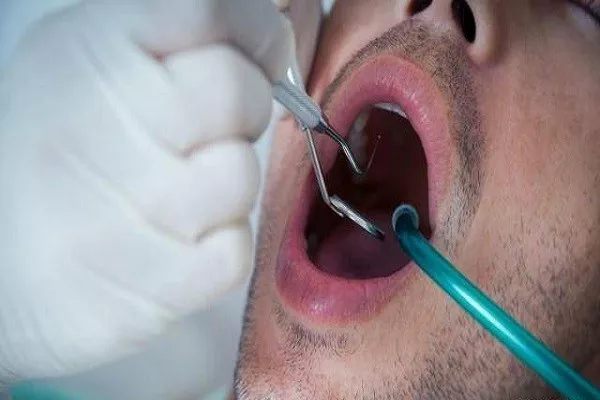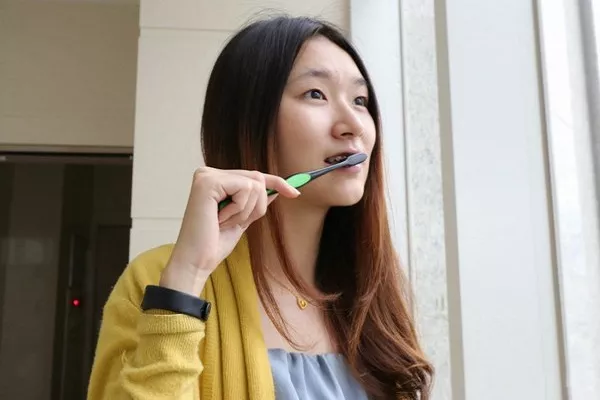In the pursuit of a dazzling smile, many individuals find themselves grappling with the challenge of yellowed teeth. The discoloration of teeth is a common concern, often attributed to various factors such as age, lifestyle choices, and oral hygiene practices. While yellow teeth can be a source of self-consciousness, advancements in dental care have paved the way for effective teeth whitening solutions.
Understanding the Causes of Yellow Teeth
Before delving into the methods of teeth whitening, it is crucial to comprehend the underlying causes of yellowing. Aging, for instance, is a natural process that can lead to the thinning of enamel, exposing the yellowish dentin beneath. Lifestyle choices, including tobacco use and the consumption of certain foods and beverages, also contribute to tooth discoloration. Poor oral hygiene, medications, and even genetic factors play significant roles in the development of yellow teeth.
Professional Teeth Whitening: An Overview
For individuals seeking a swift and reliable solution to yellow teeth, professional teeth whitening stands out as a viable option. Dentists offer a range of in-office treatments designed to break down stains and restore the teeth’s natural whiteness. These treatments often involve the use of potent whitening agents, such as hydrogen peroxide or carbamide peroxide, which penetrate the enamel to eliminate stubborn stains.
One of the primary advantages of professional teeth whitening is the speed of results. In a single session, patients can experience a noticeable improvement in the color of their teeth. Moreover, the procedure is supervised by dental professionals, ensuring safety and efficacy.
The Science Behind Professional Teeth Whitening
Professional teeth whitening relies on the principles of oxidation to eliminate stains and discoloration. The active ingredients in whitening agents, typically hydrogen peroxide or carbamide peroxide, release oxygen molecules that penetrate the enamel and break down the pigmented molecules responsible for stains. This chemical reaction, known as oxidation, leads to a brighter and whiter appearance.
Dentists customize the concentration of whitening agents based on individual needs, ensuring a balance between effectiveness and safety. While the process is generally safe, it is essential to consider potential side effects, such as tooth sensitivity, and consult with a dentist to determine the most suitable treatment plan.
In-Office Whitening Procedures: What to Expect
In-office teeth whitening procedures typically follow a structured protocol to achieve optimal results. The process begins with a comprehensive dental examination to assess the patient’s oral health and identify any potential issues that may affect the whitening process. Professional cleaning may also be performed to remove surface stains and optimize the effectiveness of the whitening agents.
Once the initial preparations are complete, a protective barrier is applied to the gums to shield them from the whitening agent. The whitening gel or solution is then carefully applied to the teeth, and a specialized light or laser may be used to enhance the activation of the whitening agents. The duration of the treatment varies but generally ranges from 30 minutes to an hour.
Patients often report a visible difference in the color of their teeth immediately after the procedure. However, dentists may recommend additional sessions for individuals with more stubborn stains or those desiring further whitening.
At-Home Whitening Options: A Convenient Alternative
While professional in-office teeth whitening is widely regarded for its efficacy, some individuals prefer the convenience of at-home whitening options. Over-the-counter whitening kits and products, such as whitening toothpaste, strips, and gels, are readily available for those seeking a more flexible approach to teeth whitening.
It is essential to note that at-home whitening options may not deliver the same level of results as professional treatments. The concentration of active ingredients is generally lower, and the application methods may be less precise. However, for individuals with mild discoloration or as a maintenance strategy following professional whitening, at-home options can be a suitable choice.
Choosing the Right At-Home Whitening Products
The market is flooded with a myriad of at-home whitening products, each claiming to be the most effective. Selecting the right product requires careful consideration of factors such as the concentration of whitening agents, ease of use, and potential side effects.
Whitening toothpaste is a popular choice, as it incorporates mild abrasives and polishing agents to remove surface stains. However, for deeper and more stubborn discoloration, whitening strips or gels with higher concentrations of hydrogen peroxide may be more effective. It is crucial to follow the manufacturer’s instructions meticulously to avoid overuse and minimize the risk of sensitivity.
Natural Remedies: Myth or Miracle?
In the quest for whiter teeth, some individuals turn to natural remedies as an alternative to commercial whitening products. While anecdotal evidence suggests the efficacy of certain natural ingredients, such as baking soda, activated charcoal, and coconut oil, scientific support for these remedies is limited.
Baking soda, for instance, is known for its mild abrasive properties, which can help remove surface stains. Activated charcoal is believed to absorb impurities and pigments, while coconut oil pulling is thought to promote oral hygiene. However, the long-term effects and safety of these natural remedies remain subjects of ongoing research.
It is crucial to approach natural remedies with caution and consult with a dentist before incorporating them into a dental care routine. While they may offer some benefits, they are not a substitute for professional dental care and may not provide the same level of whitening as clinically proven treatments.
Lifestyle Modifications for Whiter Teeth
Beyond professional treatments and at-home remedies, certain lifestyle modifications can contribute to maintaining whiter teeth. Adopting good oral hygiene practices, such as regular brushing, flossing, and using an antiseptic mouthwash, is fundamental to preventing the buildup of stains and discoloration.
Limiting the consumption of stain-inducing foods and beverages, such as coffee, tea, red wine, and berries, can also play a significant role in preserving the whiteness of teeth. Additionally, quitting tobacco products can not only improve overall oral health but also prevent yellowing caused by nicotine and tar deposits.
Addressing Underlying Dental Issues
In some cases, yellowing of teeth may be a symptom of underlying dental issues that require professional attention. Tooth decay, enamel erosion, and certain medical conditions can contribute to discoloration. It is essential to consult with a dentist to identify and address any underlying issues before pursuing teeth whitening treatments.
Dental procedures such as veneers or crowns may be recommended for individuals with severe discoloration or structural issues. Veneers, in particular, are thin shells of porcelain or composite resin that are custom-made to cover the front surface of teeth, providing a durable and aesthetically pleasing solution to yellowing.
Maintaining Whiter Teeth: Tips for Long-Term Success
Achieving whiter teeth is just the beginning; maintaining the results requires ongoing effort and commitment. Regular dental check-ups and cleanings are essential to address any emerging issues and prevent the accumulation of stains. Dentists may provide touch-up treatments or recommend at-home maintenance products to prolong the effects of professional whitening.
Adopting a tooth-friendly diet, staying hydrated, and avoiding habits that contribute to tooth discoloration are integral to long-term success. It is crucial to follow the dentist’s advice on oral care practices and be mindful of lifestyle choices that can impact the whiteness of teeth.
Conclusion: A Brighter, Whiter Smile is Within Reach
In conclusion, the quest for whiter teeth is a journey that can be tailored to individual preferences and needs. Professional teeth whitening, with its immediate and dramatic results, remains a top choice for those seeking a radiant smile. At-home whitening options provide a convenient alternative, while natural remedies and lifestyle modifications offer additional avenues for exploration.
The key to a successful teeth whitening journey lies in informed decision-making and collaboration with dental professionals. Understanding the causes of yellow teeth, the science behind whitening procedures, and the array of available options empowers individuals to make choices that align with their goals and preferences.
While yellow teeth may be a common concern, the advancements in dental care ensure that achieving a brighter, whiter smile is not only possible but also accessible to individuals of all ages. With the right knowledge, guidance, and commitment to oral health, anyone can confidently embark on the path to a dazzling, radiant smile.
Related Links:
Unlocking the Secrets: How Long Does it Take to Transform Yellow Teeth into a Dazzling White Smile?
Unlocking the Secrets: How to Clean Yellow Teeth Naturally
Unveiling the Best Toothpaste for Yellow Teeth: A Comprehensive Guide to Brighter Smiles





























